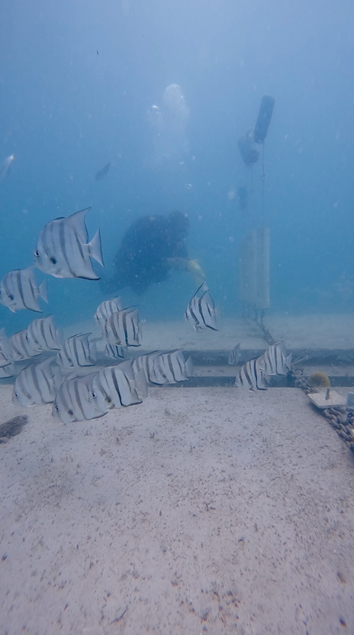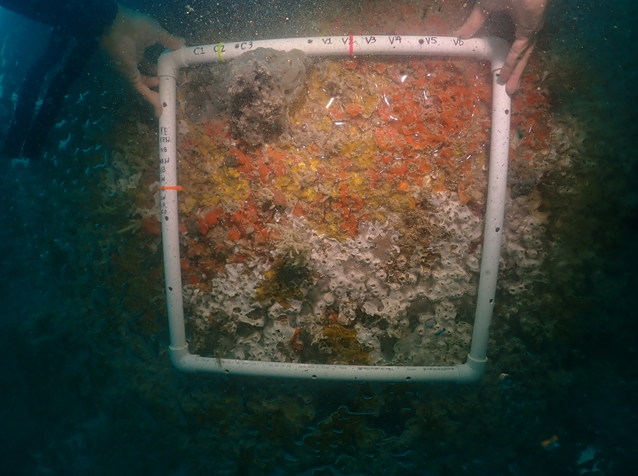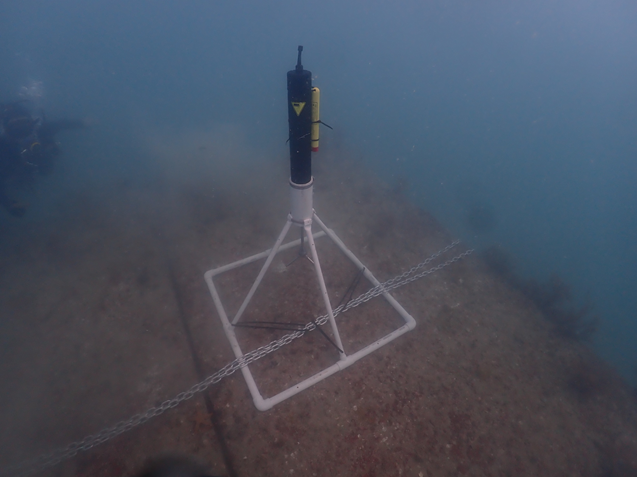
With the installation of a new artificial reef off of southwest Florida (Kimberly’s Reef), we are taking advantage of the unique opportunity to study changes to the ecosystem over time and the influence of disturbances like large freshwater discharges from the Caloosahatchee River. Our work will better characterize the effects of these discharges on harmful algal blooms and offshore resources, and will help identify nutrient reduction goals that will benefit regional fishing and tourism.
Why We Care
The West Florida Shelf, located offshore from Lee and Collier counties in southwest Florida, is susceptible to a variety of coastal disturbances (e.g., hurricanes, harmful algal blooms, blooms of macroalgae, freshwater inundation), which can have substantial negative economic impacts on fishing and tourism. High freshwater river discharge from the nearby Caloosahatchee River with its artificial connection to Lake Okeechobee, and slow-moving coastal waters, intensifies the impacts of these coastal disturbances. The Caloosahatchee River discharges water onto the West Florida Shelf, carrying nutrients and organic matter that can fuel harmful algal blooms and hypoxia, leading to fish kills. Freshwater inundation from river discharge can also stress local marine fishes, sponges, and shellfish.
What We Are Doing
We are conducting an intensive study on the effects of Caloosahatchee River discharge on coastal water quality and bottom habitats, including impacts of harmful algal blooms, nutrient loading, and low salinity on local fishes, sponges, and shellfish. This will be done at Kimberly’s Reef, an artificial reef complex constructed in 2023 to provide a platform for research, education, and outreach. This area also provides grounds for recreational, charter, and commercial fishing. Researchers aim to:
-
- Understand how organisms in the reef community, like local fishes, sponges, and shellfish, are impacted by disturbances, especially variations in water quality, freshwater river discharges, and red tide
- Monitor how this new artificial reef is colonized by different organisms like macroalgae, invertebrates, and fish species
- Provide continuous monitoring data for water quality, and measure how water and nutrients are transported and deposited throughout the artificial reef
- Assess the presence of toxins associated with red tide in the reef in sediments and shellfish
- Combine water movement, sediment flux, and water quality data to better understand their role in shaping biological communities and nutrient dynamics

This photo shows early colonizers on the inside roof of one of the concrete culverts at Kimberly’s Reef Complex nearly one year after deployment. Credit: NOAA.
Benefits of Our Work
Through this work, researchers will be able to better characterize the effects of Caloosahatchee River discharges on offshore resources. In turn, this will improve our understanding of how changes in salinity and nutrient loading combine to impact the ecosystems that receive this river discharge, and will help managers better identify maximum nutrient loading targets. Further, the data collected can be used to assess the resiliency of coastal ecosystems to discharges from the Caloosahatchee River and related harmful algal bloom impacts. This work will benefit stakeholders that use coastal resources (e.g., fishing and diving) and will provide experiential learning opportunities for Florida Gulf Coast University students.
This Community Directed Spending project is led by Dr. Melissa May in collaboration with Dr. Michael Parsons, Dr. David Fugate, Dr. James Douglass, Dr. Puspa Adhikari, and Dr. David Stormer at Florida Gulf Coast University.

